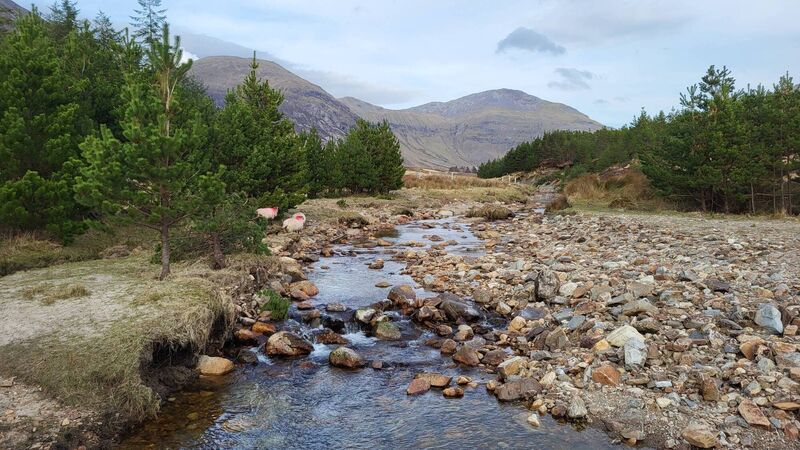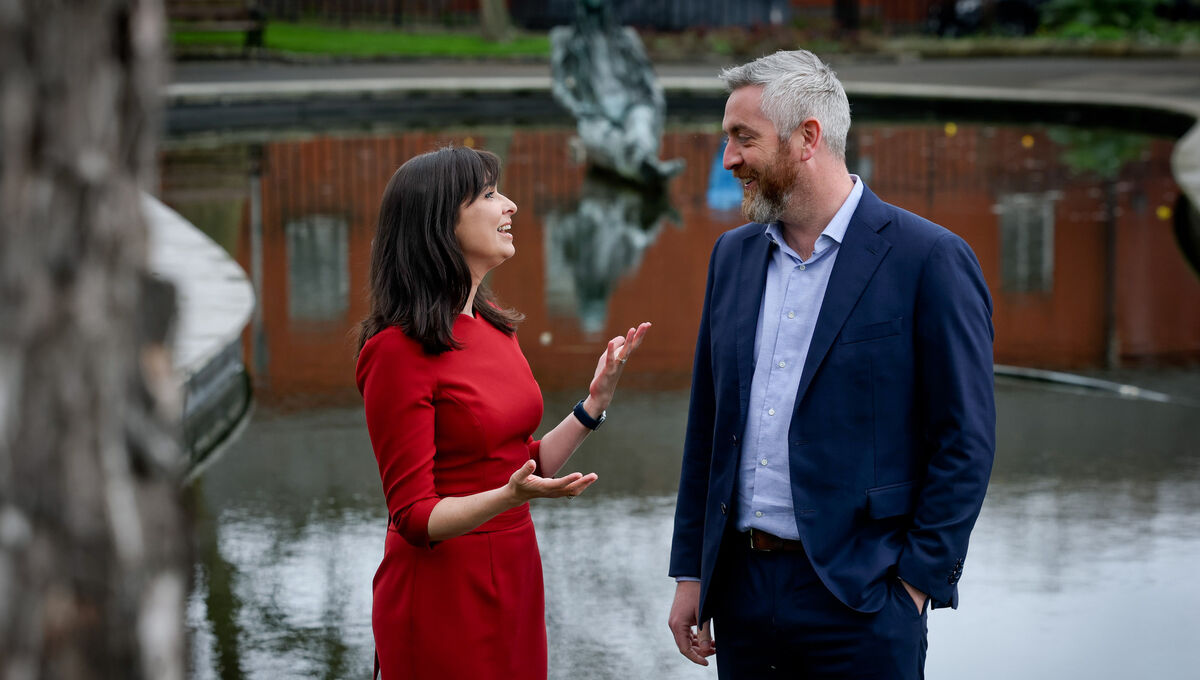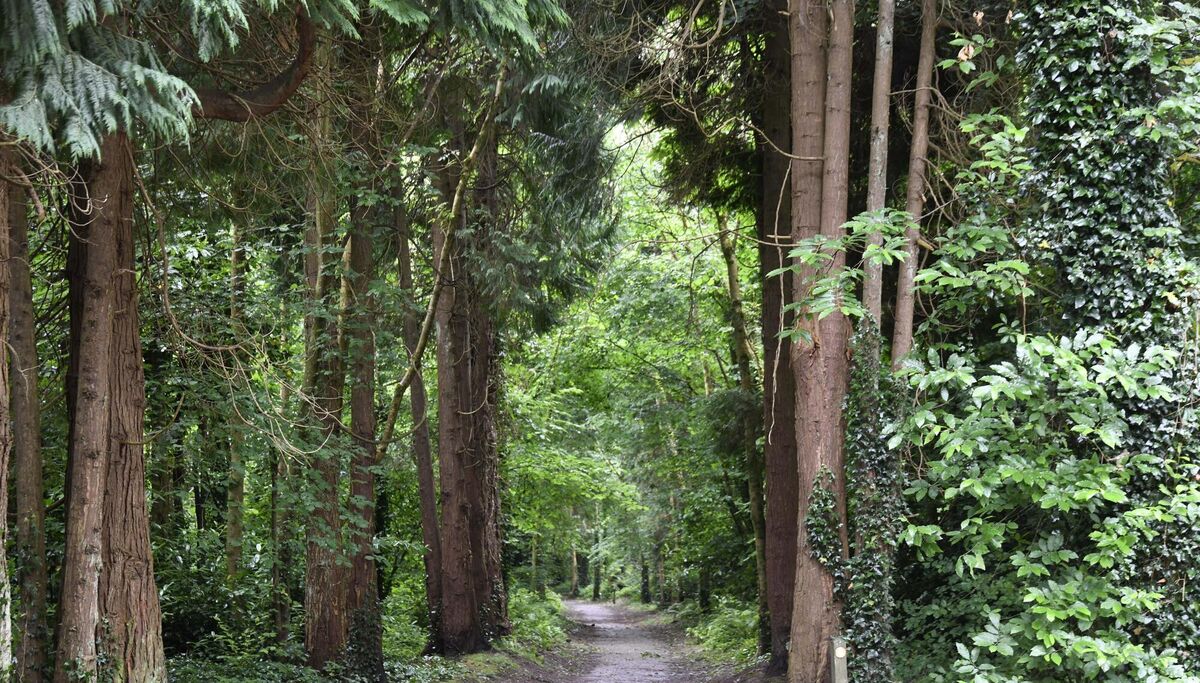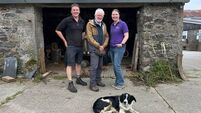Landowners must be rewarded in State's nature restoration plan

Failed Coillte forestry on the boundary of Connemara National Park. Coillte, which manages 7% of all land in Ireland, is governed by an outdated commercial mandate that must be reformed. Picture: Pádraic Fogarty
A top-down approach is a term given to the strategy whereby a top-level executive gives orders about what lower-level employees further down the chain are to do. It’s a traditional approach to management and, while it may work for companies in the corporate world, it’s not really a model that transfers into broader society where you need to get buy-in from various stakeholders.
Addressing the first meeting of the leaders’ forum on nature restoration to discuss the national nature restoration plan, minister of state for nature, heritage, and biodiversity Christopher O’Sullivan said: “If we’re to get the plan right, we need to listen to everybody. It can’t be a top-down approach, it can’t be a case of myself or the State telling people how this plan is going to come together.”
This balanced, inclusive approach is very welcome and necessary for an ambitious, workable, measurable, and well-funded nature restoration plan to be hammered out and agreed upon.
Politicians have consistently stated, and Mr O’Sullivan himself has said, that the national restoration law will focus on public rather than private land.
However, key public bodies continue to operate under commercial legal mandates. There is no clear process to identify the most suitable lands for nature restoration.
This is where the State must show leadership. It is unfair to expect farmers and landowners to step up to volunteer some of their own holdings if the State holds back on public lands.

And, apart from leadership, it makes sense in so many ways. State bodies represent the largest landowners in the country. These public lands include important habitats such as bogs and fragments of ancient woodland.
Using those lands reduces the restoration burden on private landowners.
Achieving nature restoration at scale is obviously easier to achieve when working on large areas of public land rather than trying to work across a number of small landowners with varying attitudes towards environmental conservation.
However, it will involve the State having to make some important decisions. It will have to reform Coillte and Bord na Móna’s legal mandates to ensure that nature restoration and climate action are given equal priority with commercial interests.
The lack of transparency around the dissolution of Coillte Nature again highlights the need for reform of the outdated commercial mandates that govern Coillte, a body that ultimately manages 7% of Ireland’s land.
The National Parks and Wildlife Service should also conduct an independent analysis of the nature restoration potential of public lands — including national parks, Office of Public Works lands, Coillte, and Bord na Móna lands.
We cannot credibly expect bodies operating under a commercial mandate to determine the scale and level of ambition of nature restoration on public lands.
Politicians have been at pains to point out that nature restoration will be voluntary for landowners. It must also be rewarded.
Mr O’Sullivan said that financing would be necessary to put the money behind farmers who do want to take part. Again, it is a welcome intervention by the minister but it does lead to a raft of questions.

How will restoration efforts be financed? Will funds be ring-fenced within the infrastructure, climate, and nature fund? Will there be additional public funding? How will the Government ensure that EU funds from the new multi-financial framework align with the nature restoration plan?
The Irish Environmental Network’s high-level recommendations for funding nature restoration in Ireland report sets out a roadmap for funding nature and biodiversity restoration and conservation in Ireland, and it would be well worth a read by the Government and policymakers.
In conjunction with Natural Capital Ireland, the Irish Environmental Network brought together a diverse group of experts from academia, business, environmental NGOs, farming, government departments, and semi-state bodies to workshop recommendations for funding nature restoration — which are set out in the report.
The administration of financing will also be crucial. A repeat of the Acres fiasco, where IT failures, the lack of staffing, on top of a huge demand for the scheme that incentivised farmers to improve biodiversity on their lands, could prove fatal for nature restoration efforts and must be avoided at all costs.
Success will also involve engaging with landowners early and consistently through knowledge exchange, ensuring they have ownership over the design and implementation of restoration measures that impact them.
Added to this, the Government must take measures to eliminate perverse subsidies that contribute to biodiversity loss.
It is ridiculous to be talking about nature restoration while attempts by farmers to leave areas for nature on their farms are penalised under the current way farm subsidies are paid.
Transparency will be crucial when identifying sites for habitat restoration, re-establishment, and connectivity. These decisions must be grounded in scientific evidence.
Tied to this, the Government should consider a public information and education campaign for wider society to explain what nature restoration is, why it is so important to act now, and how they can take part through the community conversation programme that will take place later this year.
Maybe if we work from the bottom up, combining a little top-down leadership, the best available science, and a bit of lean-in from each side, we can all meet in the middle and agree on a plan that, to quote the minister, will be “a good result for nature, a good result for society, and a good result for agriculture”.
CLIMATE & SUSTAINABILITY HUB















